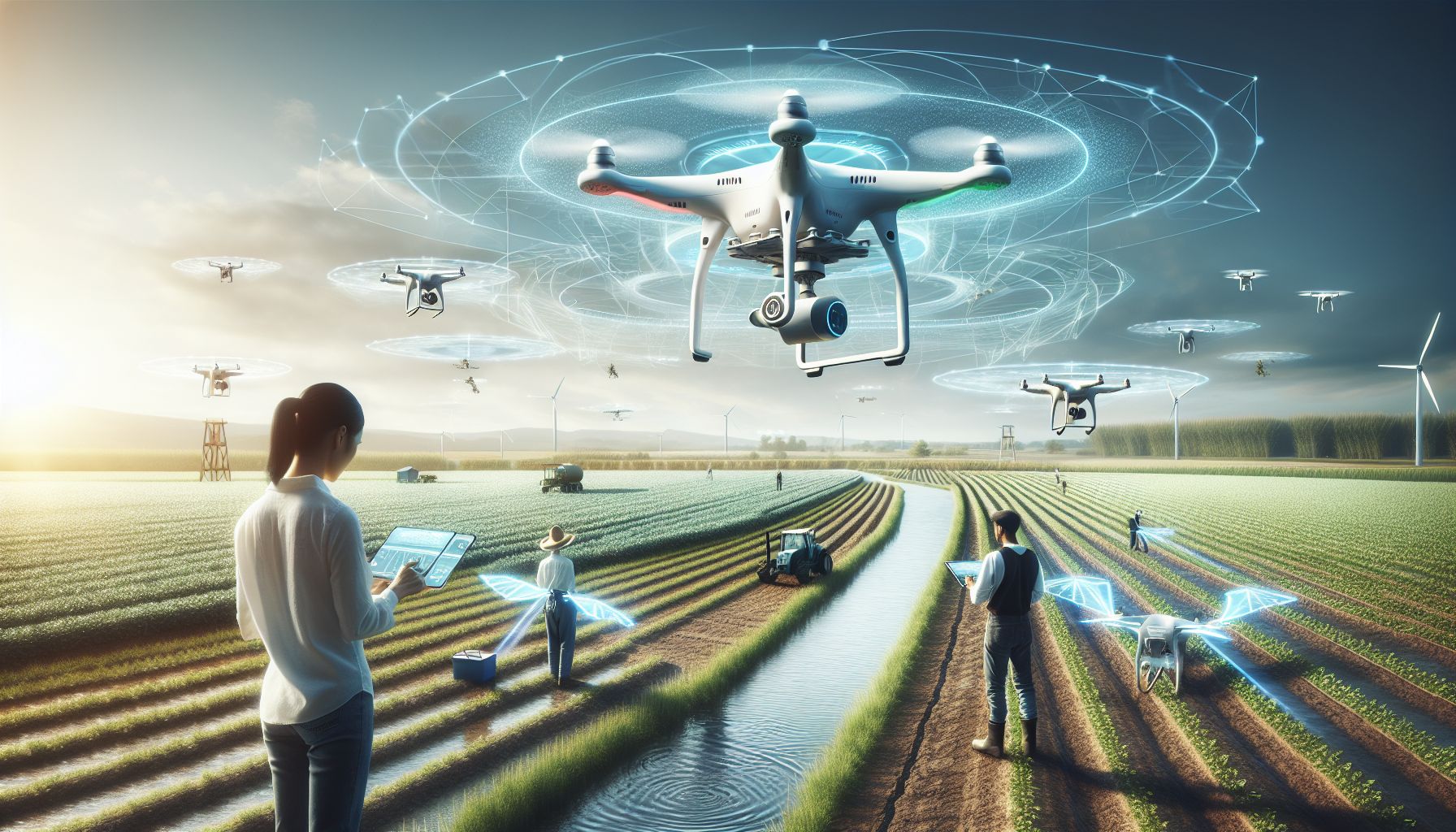📌 Let’s explore the topic in depth and see what insights we can uncover.
⚡ “Imagine a world where drones do the farming chores while you enjoy that second cup of coffee. Welcome to the revolutionary, hyper-efficient era of precision agriculture!”
In the past decade, we’ve seen massive technological advancements reshape various sectors, and agriculture is no exception. The introduction of drones in farming is steering a new revolution, giving birth to a concept known as precision agriculture. But what exactly is precision agriculture, and how do drones play a role in it? Drones, or unmanned aerial vehicles (UAVs), are increasingly becoming indispensable tools in agriculture. These flying robots are not only changing the way we farm but are also providing farmers with new ways to increase yields and reduce crop damage. Through the lens of drone technology, let’s explore the future of precision farming and its potential to revolutionize the agriculture industry.
🌾 Precision Agriculture: A Brief Overview

Sky-High Innovation: Redefining Farming with Drones
Precision agriculture, also known as precision farming, is a farming management concept that uses technology and data to optimize crop yields and profitability while minimizing waste and environmental impact. Farmers use technology like GPS, data analytics, and of course, drones, to monitor and adjust farming strategies based on real-time conditions. The rise of precision agriculture is a testament to the evolution of farming from its humble roots. If traditional farming was the horse-drawn carriage, precision agriculture is the Tesla. And in this high-tech farming landscape, drones are the autopilot.
🚁 The Role of Drones in Precision Agriculture
In the world of precision agriculture, drones are like airborne superheroes 🦸. They swoop down to provide vital information, assist in crop management, and even help in planting and spraying crops. Here’s a deeper look at how drones are taking farming to new heights:
Drone-Based Crop Monitoring 🌽
In large farms, it’s a challenge to monitor crops regularly and accurately. However, drones equipped with advanced sensors can do this job efficiently. They generate precise maps for soil analysis, which is vital for planning seed planting patterns. During the growth phase, drones provide detailed information on crop health to help detect plant diseases and deficiencies early on.
Automated Planting 🌱 and Crop Spraying 🚜
Some drones are designed to perform planting tasks, reducing the time and labor required. They shoot pods containing seeds and plant nutrients into the soil. Similarly, drones can spray fertilizers and pesticides more accurately and efficiently than traditional methods, which often leads to overuse and waste.
Livestock Management 🐄
🧩 As for Drones, they’re also used for monitoring livestock, providing farmers with real-time data about the animals’ health and location. It’s like having a bird’s eye view shepherd keeping an eye on the flock from the sky.
💻 Data Analytics: The Brain Behind Drone Technology
🧩 As for Drones, they’re more than just high-tech farming equipment; they’re data-gathering machines. They collect vast amounts of data, which is then analyzed to provide actionable insights. With advanced sensors and imaging capabilities, drones can capture high-resolution images that show variations in soil and crop health that might not be visible to the naked eye. They can also gather data on irrigation, pest infestation, and weather conditions, among other things. This data is analyzed using machine learning algorithms to create predictive analytics for crop yields, soil health, and more. Farmers can use this information to make informed decisions, from when and where to plant, to optimizing irrigation schedules, to determining the right time to harvest.
🚀 The Future of Drones in Agriculture
The future of drones in agriculture is as vast as the fields they fly over. With growing technological advancements and decreasing costs, drones are becoming more accessible to farmers. In the future, we might see drone swarms, where a group of drones works together to perform tasks more quickly and efficiently. We can also expect advancements in drone technology to improve their capabilities. Future drones may be able to perform more complex tasks, such as selective harvesting or precise weed control, further optimizing farming operations. Moreover, drones could play a major role in sustainable farming practices. By improving efficiency and reducing waste, drones can help make farming more environmentally friendly.
🧭 Conclusion
In the world of precision farming, drones are more than just a trend; they’re an innovation that’s here to stay. They’re transforming agriculture by making it more efficient, profitable, and sustainable. And as drone technology continues to evolve, we can expect even more exciting developments in the future. Drones in agriculture are not just about the future; they’re about the present. They’re already here, buzzing over fields, collecting data, and helping farmers make more informed decisions. So, the next time you enjoy a fresh piece of fruit or a delicious vegetable, remember: a drone might have had a part in bringing that food to your table.
📡 The future is unfolding — don’t miss what’s next!
